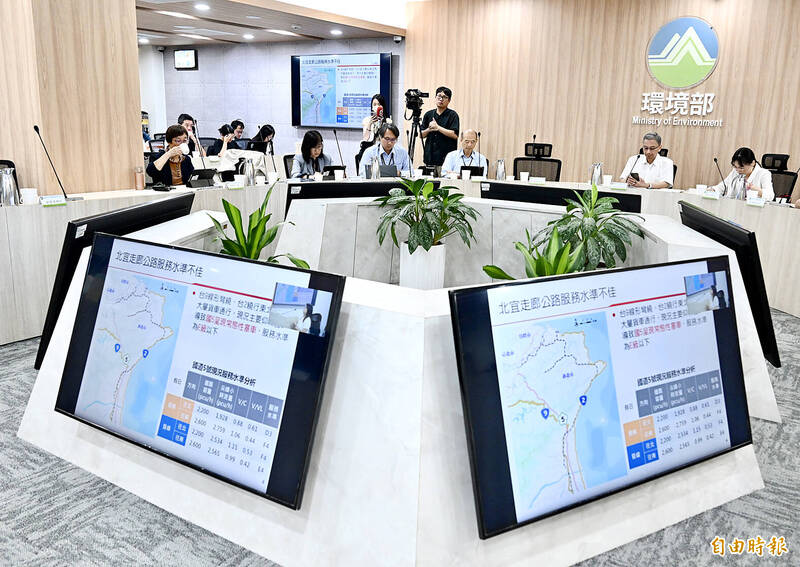Report on Stochastic Energy Management for Microgrids: A Framework for Advancing Sustainable Development Goals
Executive Summary
This report details a stochastic optimization framework for microgrid energy management designed to advance key Sustainable Development Goals (SDGs), particularly SDG 7 (Affordable and Clean Energy), SDG 11 (Sustainable Cities and Communities), and SDG 13 (Climate Action). The framework integrates electric bicycle (E-Bike) and electric vehicle (EV) charging stations with a green certificate market (GCM) to simultaneously enhance environmental sustainability and economic efficiency. By modeling uncertainties in renewable energy generation and load demand using the Two-Point Estimation Method (TPEM), the system ensures robust and resilient operation. A novel metaheuristic algorithm, Mountaineering Team-Based Optimization (MTBO), is employed to solve a multi-objective problem targeting the minimization of operational costs and emissions, and the maximization of GCM revenue. Comparative analysis demonstrates the framework’s significant contributions to sustainability. The integration of mobile storage (EVs and E-Bikes) reduced operational costs by 18.6% and emissions by 10.9%. The stochastic management approach further reduced costs by 19.8% relative to the baseline, showcasing a viable pathway for developing resilient, low-carbon, and economically sound energy infrastructure in line with global sustainability targets.
Introduction: Aligning Microgrid Management with Sustainable Development Goals
The global transition towards sustainable energy systems is a critical challenge of the current era, directly addressing several United Nations Sustainable Development Goals (SDGs). This report examines an advanced energy management system (EMS) for microgrids that leverages renewable energy, clean transportation, and innovative market mechanisms to create a holistic solution for sustainable development.
SDG 7 & 13: The Imperative for Clean Energy and Climate Action
Achieving SDG 7 (Affordable and Clean Energy) and SDG 13 (Climate Action) requires a fundamental shift away from fossil fuels. The extensive use of traditional energy sources contributes to greenhouse gas emissions, global warming, and significant environmental degradation. This research addresses this challenge by focusing on a microgrid framework that prioritizes renewable energy sources like solar and wind. By integrating these clean sources, the system directly contributes to reducing greenhouse gas emissions and curbing the negative impacts of climate change. Furthermore, the inclusion of a Green Certificate Market (GCM) provides a market-based incentive to promote clean energy production, making renewable investments more economically attractive and accelerating the transition to a low-carbon economy.
SDG 11: Building Sustainable Cities and Communities
The rapid growth of urban populations necessitates the development of sustainable infrastructure, a core tenet of SDG 11 (Sustainable Cities and Communities). This research contributes to this goal by integrating clean transportation solutions—specifically Electric Vehicles (EVs) and Electric Bicycles (E-Bikes)—into the urban energy ecosystem. These mobile storage units not only reduce emissions from the transport sector but also enhance the flexibility and resilience of the energy grid through Vehicle-to-Grid (V2G) capabilities. By optimizing the charging and discharging of these vehicles, the microgrid can better manage demand, reduce traffic congestion, and mitigate air pollution in densely populated areas, fostering healthier and more sustainable urban environments.
SDG 9: Fostering Innovation and Resilient Infrastructure
Building resilient infrastructure and fostering innovation are central to SDG 9 (Industry, Innovation, and Infrastructure). The proposed framework introduces significant technological innovations to address the complexities of modern energy systems. Key contributions include:
- A Novel Optimization Algorithm (MTBO): Development of the Mountaineering Team-Based Optimization (MTBO) algorithm to solve high-dimensional, multi-objective energy scheduling problems more effectively than traditional methods like Particle Swarm Optimization (PSO).
- Advanced Uncertainty Modeling (TPEM): Use of the Two-Point Estimation Method (TPEM) to efficiently model the inherent variability of renewable energy and load demand, ensuring the microgrid’s operational decisions are robust and resilient against real-world fluctuations.
- Integrated Systems Approach: A holistic framework that combines renewable generation, mobile and stationary storage, demand response, and market mechanisms, representing a significant step forward in smart grid technology and resilient infrastructure design.
Methodology: A Framework for Sustainable and Resilient Energy Systems
The proposed energy management model is built on a multi-objective, stochastic optimization framework designed to ensure the microgrid operates in a manner that is economically efficient, environmentally responsible, and resilient, thereby supporting multiple SDGs.
System Components for a Sustainable Microgrid
The microgrid architecture integrates a diverse set of assets to maximize sustainability and flexibility:
- Renewable Energy Sources (SDG 7): Photovoltaic (PV) panels and Wind Turbines (WT) serve as the primary clean energy generators.
- Mobile Energy Storage (SDG 11): Electric Vehicles (EVs) and E-Bikes provide flexible storage and support clean transportation.
- Stationary Energy Storage: A Battery Energy Storage System (BESS) helps balance supply and demand by storing excess renewable energy.
- Dispatchable Generation: Microturbines (MT) and Fuel Cells (FC) provide reliable power to ensure stability during periods of low renewable output.
- Demand Response (DR): Flexible load management programs help reduce peak demand and enhance grid stability.
Multi-Objective Optimization for Sustainability
The framework simultaneously optimizes three conflicting objectives to achieve a balanced and sustainable operational strategy, directly contributing to SDG 7, 11, and 13:
- Minimize Operational Costs: Reducing the overall cost of energy production, storage degradation, and grid transactions to ensure the economic viability and affordability of clean energy (supporting SDG 7).
- Minimize Emissions: Lowering greenhouse gas emissions from non-renewable sources (grid, MT) to combat climate change and improve air quality (supporting SDG 13 and SDG 11).
- Maximize Green Certificate Revenue: Increasing income from the GCM by maximizing the use and export of renewable energy, creating a powerful financial incentive for sustainable practices.
Stochastic Modeling for Resilience (SDG 9 & 11)
To build a resilient energy system capable of withstanding real-world variability, the framework employs the Two-Point Estimation Method (TPEM). This probabilistic technique models uncertainties in solar irradiance, wind speed, and load demand. Unlike computationally intensive methods, TPEM provides an accurate statistical representation with minimal simulations, making it a practical tool for robust decision-making. This enhances the reliability of the energy supply, a critical component of resilient infrastructure as outlined in SDG 9 and SDG 11.
Advanced Optimization with Mountaineering Team-Based Optimization (MTBO)
The complex, multi-objective optimization problem is solved using a novel metaheuristic algorithm, Mountaineering Team-Based Optimization (MTBO). Inspired by the collaborative dynamics of a mountaineering team, MTBO is designed to efficiently navigate complex search spaces and avoid local optima. Its superior balance of exploration and exploitation makes it highly effective for high-dimensional, uncertainty-aware energy scheduling, providing a significant innovation (SDG 9) for managing modern energy systems.
Analysis of Results: Quantifying the Impact on Sustainability Metrics
The performance of the proposed framework was evaluated across three distinct operational scenarios to quantify its contribution to sustainability.
Case I: Baseline Scenario (No Mobile Storage)
In this initial case, the microgrid operated without EVs or E-Bikes. The system relied on dispatchable generators and the main grid, resulting in the highest operational costs ($1184.63) and emissions (1011.82 kg). This scenario highlights the limitations of a system lacking flexible storage and underscores the need for integrated solutions to meet sustainability targets.
Case II: Integrating Mobile Storage for Enhanced Sustainability (SDG 7 & 11)
This scenario incorporated EVs and E-Bikes as mobile storage units. The results demonstrated a significant positive impact on sustainability metrics:
- Operational costs were reduced by 18.6% compared to Case I, advancing SDG 7 by making the energy system more affordable.
- Emissions were reduced by 10.9%, directly contributing to SDG 13.
- Green certificate revenue increased by 29.9%, creating stronger economic incentives for clean energy.
These outcomes prove that integrating clean transport solutions (SDG 11) with the grid provides substantial economic and environmental benefits.
Case III: Stochastic Management for Real-World Resilience and Climate Action (SDG 13)
This case introduced uncertainty modeling via TPEM to simulate real-world conditions. The findings highlight the trade-offs inherent in managing a variable system:
- Operational costs were further reduced to $950.12, a 19.8% improvement over the baseline (Case I), demonstrating the economic benefits of uncertainty-aware scheduling.
- Demand response costs increased by 7.5% compared to Case II, as the system relied more on load flexibility to manage fluctuations.
- Green certificate revenue decreased by 38.9% due to the unpredictability of renewable generation, which sometimes limited the amount of clean energy available for export.
While stochastic management presents challenges, it provides a more realistic assessment of system performance and reinforces the need for robust, flexible, and intelligent control systems to achieve SDG 13 under variable conditions.
Conclusion and Policy Implications for Achieving the SDGs
This report has presented a comprehensive stochastic energy management framework that successfully integrates renewable energy, mobile storage, and market incentives to advance multiple Sustainable Development Goals. The novel Mountaineering Team-Based Optimization (MTBO) algorithm, combined with the Two-Point Estimation Method (TPEM), provides a powerful and computationally efficient tool for optimizing microgrid operations under uncertainty.
The key findings demonstrate that:
- Integration is Crucial for Sustainability: The synergistic integration of mobile storage (EVs, E-Bikes) with renewable energy sources is essential for reducing both operational costs and carbon emissions, directly supporting SDG 7, 11, and 13.
- Advanced Algorithms Drive Innovation: The MTBO algorithm significantly outperforms traditional methods, showcasing the importance of innovation (SDG 9) in developing intelligent and efficient energy management systems.
- Uncertainty Management is Key to Resilience: Stochastic modeling provides a realistic pathway to designing resilient energy infrastructure (SDG 9 and 11), though it highlights the need for policies that support flexibility, such as demand response and robust market mechanisms for green energy.
For policymakers, this research underscores the importance of creating regulatory environments that encourage the adoption of V2G technologies, support green certificate markets, and invest in smart grid infrastructure. By fostering such innovations, communities can accelerate their transition towards affordable, reliable, and sustainable energy systems, making significant strides in achieving the 2030 Agenda for Sustainable Development.
Analysis of Sustainable Development Goals (SDGs) in the Article
1. Which SDGs are addressed or connected to the issues highlighted in the article?
The article on microgrid energy management addresses several interconnected Sustainable Development Goals (SDGs) by focusing on clean energy, sustainable infrastructure, climate action, and economic efficiency. The primary SDGs identified are:
-
SDG 7: Affordable and Clean Energy
This goal is central to the article. The research focuses on managing and optimizing energy from renewable sources like solar (PV) and wind (WT). The introduction explicitly states that “Countries worldwide are increasingly turning to renewable energy sources such as solar, wind, and biomass to reduce dependency on fossil fuels.” The entire framework is designed to enhance the integration and efficiency of these clean energy sources in a microgrid setting.
-
SDG 9: Industry, Innovation, and Infrastructure
The article contributes to this goal by proposing innovative solutions for energy infrastructure. It details the development of a “resilient” smart microgrid, which is a form of sustainable infrastructure. Furthermore, the paper introduces a “novel metaheuristic algorithm, Mountaineering Team-Based Optimization (MTBO),” which represents an advancement in scientific research and technological capability for managing complex energy systems.
-
SDG 11: Sustainable Cities and Communities
The research directly supports the creation of sustainable urban environments. It addresses the “growing adoption of EVs and E-Bikes” as a “means of sustainable urban transport, helping to reduce traffic congestion and environmental pollution in densely populated cities.” By integrating EV and E-Bike charging stations into a clean energy microgrid, the framework helps build sustainable and resilient urban infrastructure.
-
SDG 12: Responsible Consumption and Production
This goal is addressed through the theme of resource efficiency. The optimization framework’s objective to “minimize operational costs” and manage energy resources (including grid power, renewables, and storage) in the most efficient way possible aligns with sustainable management and efficient use of natural resources. The use of market mechanisms like the “green certificate market (GCM)” also promotes sustainable production patterns by creating economic incentives for clean energy.
-
SDG 13: Climate Action
The article’s core objective of “minimizing emissions” is a direct contribution to climate action. The introduction notes that fossil-based systems “contribute to greenhouse gas emissions and global warming.” The proposed energy management system actively works to reduce these emissions by prioritizing renewable energy and optimizing the entire system for lower environmental impact, as evidenced by the results showing a “13.12% reduction in emissions.”
2. What specific targets under those SDGs can be identified based on the article’s content?
Based on the article’s focus, the following specific SDG targets can be identified:
-
SDG 7: Affordable and Clean Energy
- Target 7.2: By 2030, increase substantially the share of renewable energy in the global energy mix. The article directly addresses this by developing a framework to manage a microgrid with a significant share of “renewable energy generation (solar and wind).” The pie charts in Figure 20 explicitly show the contribution of renewable sources to the energy mix.
- Target 7.3: By 2030, double the global rate of improvement in energy efficiency. The model’s objective to “minimize operational costs” inherently promotes energy efficiency. The results, such as achieving an “18.6% reduction in operational cost,” demonstrate improved economic and energy efficiency in the microgrid’s operation.
-
SDG 9: Industry, Innovation, and Infrastructure
- Target 9.1: Develop quality, reliable, sustainable and resilient infrastructure. The paper focuses on developing a “smart microgrid” that is described as “flexible and resilient.” This infrastructure is designed to be sustainable by integrating renewables and mobile storage like EVs and E-Bikes.
- Target 9.5: Enhance scientific research, upgrade the technological capabilities of industrial sectors in all countries. The development of the “novel metaheuristic algorithm, Mountaineering Team-Based Optimization (MTBO),” and a “stochastic optimization framework” is a direct contribution to enhancing scientific research and technological tools for the energy sector.
-
SDG 11: Sustainable Cities and Communities
- Target 11.2: By 2030, provide access to safe, affordable, accessible and sustainable transport systems for all. The integration of “electric bicycle (E-Bike) and electric vehicle (EV) charging stations” promotes a shift toward “clean transportation” and sustainable urban mobility.
- Target 11.6: By 2030, reduce the adverse per capita environmental impact of cities, including by paying special attention to air quality. A primary objective of the model is “minimizing emissions,” which directly tackles air pollution and the environmental impact of energy consumption in urban or community settings.
-
SDG 12: Responsible Consumption and Production
- Target 12.2: By 2030, achieve the sustainable management and efficient use of natural resources. The entire “energy management” framework is designed to optimize the use of energy resources, from fossil fuels (via grid and microturbines) to renewables and storage, thereby promoting their efficient use.
-
SDG 13: Climate Action
- Target 13.2: Integrate climate change measures into national policies, strategies and planning. The proposed optimization framework serves as a tangible strategy and planning tool for microgrid operators to mitigate climate change. By minimizing “greenhouse gas emissions,” it provides a practical method for integrating climate action into energy system operations.
3. Are there any indicators mentioned or implied in the article that can be used to measure progress towards the identified targets?
Yes, the article provides several quantitative and qualitative indicators that can be used to measure progress towards the identified targets.
-
Indicators for SDG 7 (Affordable and Clean Energy)
- Renewable energy share (Indicator 7.2.1): The contribution of solar and wind power to the total energy supply is a direct indicator. Figure 20 presents pie charts showing the “distribution of energy supply by source,” which quantifies the share of renewables (PV and WT) in different scenarios.
- Energy efficiency improvements (Indicator 7.3.1): The reduction in operational cost serves as a proxy for energy efficiency. The article quantifies this with figures like a “21.6% reduction in operational costs” and an “18.6% reduction in operational cost” (Abstract, Case II results).
- Revenue from Green Certificates: The “maximization of GCM revenue” is an economic indicator that reflects the amount of certified clean energy produced and sold. The results show specific revenue figures (e.g., “$96.78” in Table 5) and percentage changes.
-
Indicators for SDG 9 (Industry, Innovation, and Infrastructure)
- Investment in R&D (related to Indicator 9.5.1): While not a monetary value, the development of the “novel metaheuristic algorithm (MTBO)” and the publication of the research paper itself are indicators of activity and investment in energy-related R&D.
- Deployment of advanced infrastructure: The model’s core components, including the “smart microgrid,” “E-Bike and EV charging stations,” and “Battery Energy Storage System (BESS),” represent the deployment of sustainable and technologically advanced infrastructure.
-
Indicators for SDG 11 (Sustainable Cities and Communities)
- Adoption of sustainable transport: The integration and operational modeling of “EVs and E-Bikes” within the microgrid serves as an indicator of progress towards sustainable transport systems.
- Air pollution levels (related to Indicator 11.6.2): The “minimization of emissions” is a primary objective. The article provides specific quantitative data on emissions, such as “1011.82 kg” and a “13.12% reduction,” which directly measures the impact on air quality.
-
Indicators for SDG 12 (Responsible Consumption and Production)
- Material footprint/resource efficiency: The optimization of the energy mix to reduce costs and emissions is a direct measure of improved resource efficiency. The reduction in reliance on grid power or less efficient generators, as shown in the generation schedules (e.g., Figure 9), indicates more responsible consumption.
-
Indicators for SDG 13 (Climate Action)
- Greenhouse gas emissions (related to Indicator 13.2.2): The total emissions calculated in kilograms (kg) is a direct indicator. The article consistently reports on this metric across all scenarios, for instance, in Tables 4, 5, 6, and 7, allowing for clear tracking of progress in emission reduction.
4. Summary Table of SDGs, Targets, and Indicators
| SDGs | Targets | Indicators Identified in the Article |
|---|---|---|
| SDG 7: Affordable and Clean Energy |
7.2: Increase the share of renewable energy.
7.3: Improve energy efficiency. |
– Share of renewable energy (solar, wind) in the total energy mix (Figure 20). – Revenue generated from the Green Certificate Market (GCM) (e.g., “$96.78”). – Percentage reduction in total operational costs (e.g., “a 21.6% reduction”). |
| SDG 9: Industry, Innovation, and Infrastructure |
9.1: Develop sustainable and resilient infrastructure.
9.5: Enhance scientific research and upgrade technology. |
– Implementation of a smart microgrid with integrated EV/E-Bike charging stations. – Development and benchmarking of the novel “Mountaineering Team-Based Optimization (MTBO)” algorithm. |
| SDG 11: Sustainable Cities and Communities |
11.2: Provide access to sustainable transport systems.
11.6: Reduce the environmental impact of cities (air quality). |
– Integration of EV and E-Bike mobile storage and charging infrastructure. – Total emissions measured in kilograms (kg) (e.g., “901.60 kg”). – Percentage reduction in emissions (e.g., “a 13.12% reduction”). |
| SDG 12: Responsible Consumption and Production | 12.2: Achieve sustainable management and efficient use of natural resources. |
– The multi-objective optimization framework aimed at minimizing costs and emissions. – Efficient scheduling of energy resources to reduce waste and improve economic performance. |
| SDG 13: Climate Action | 13.2: Integrate climate change measures into policies, strategies, and planning. |
– The stochastic energy management framework as a planning tool for emission reduction. – Quantified reduction of greenhouse gas emissions across different operational scenarios (Tables 4-8). |
Source: nature.com






